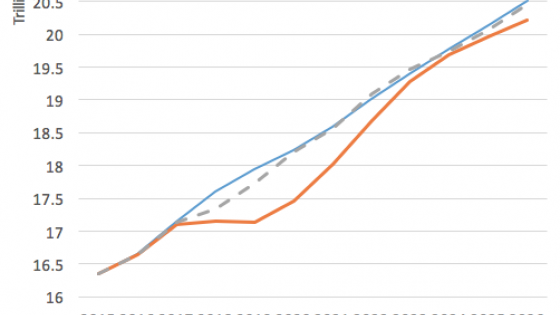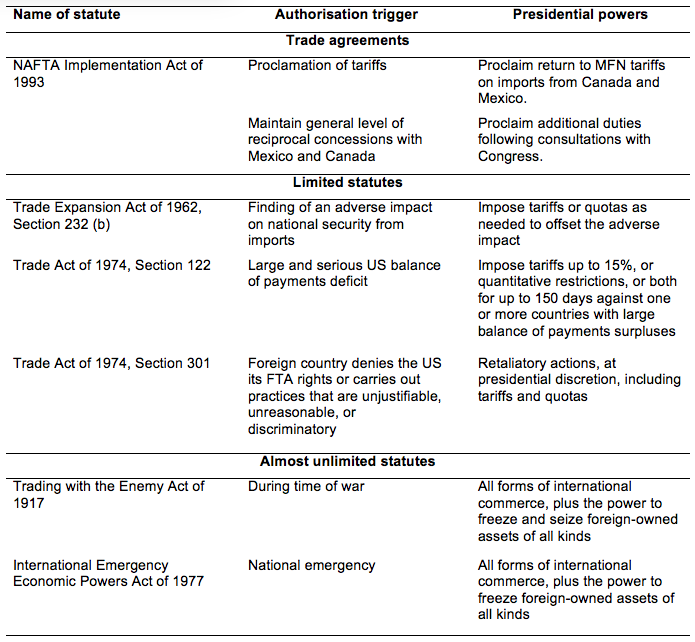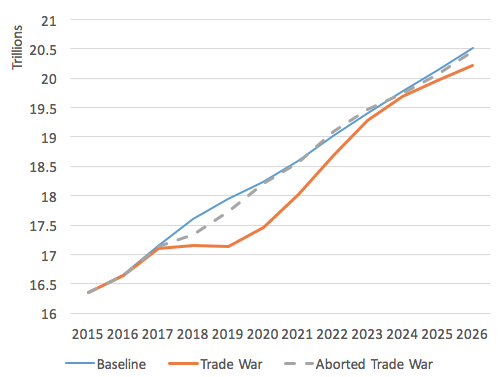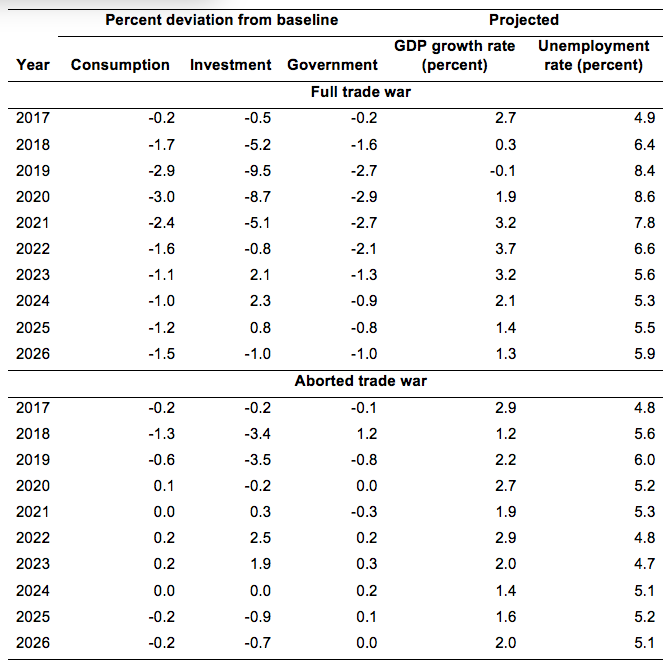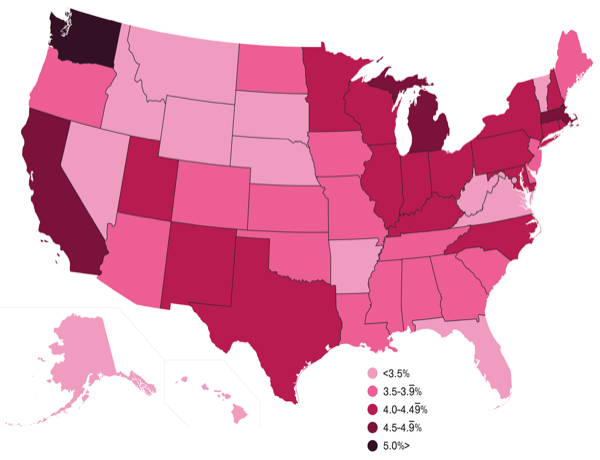It would be a grave mistake for American voters to underestimate the power of the US presidency – or to exaggerate the ability of checks and balances to rein in radical policies.
Republican nominee Donald J Trump has made headlines threatening to pull out of the WTO (Mount 2016), renegotiate the North-American Free Trade Agreement (NAFTA) (Needham 2016), and impose 35% and 45% tariffs on imports from Mexico and China respectively (Johnson 2016). Would Trump have the powers to carry out these threats without Congressional consent? Would the courts stop him?
The simple answers are that, as president, Trump would have such powers, and he is not likely to be derailed by the judiciary (Hufbauer 2016). Over the past century, Congress has delegated to the president enormous authority to restrict trade and other forms of international commerce. To be sure, the five most pertinent statutes (summarised in Table 1) were enacted with different objectives in mind. But the laws remain on the books for any president to use. As Justice Scalia taught, the foremost guide to statutory interpretation is the language of the law itself, not the historical context or legislative deliberations.
If turned into actions, Trump’s trade threats would attract numerous legal challenges by business firms and even states, but his actions would likely survive court challenges. Moreover, Congressional protests would have little effect unless super-majorities amended the statutes over Trump’s veto.
Statutes do not die of old age, and the granddaddy law, now nearly a century old, is the Trading with the Enemy Act of 1917. TWEA enables the president to restrict all international trade and financial flows, and to freeze or seize any foreign assets, during time of war. The powers are breath-taking – actions are not limited to the military enemy.1 If invoked, the TWEA puts all foreign commerce at risk.
Moreover, since the WWII, for the purposes of TWEA, the US has been at war almost continuously, through Congressional declarations and resolutions.2 If peace should intrude, the International Emergency Economic Powers Act of 1977 allows the president to restrict trade and finance during a national emergency. Presidential declarations of national emergency are simply not questioned by the courts. Presidents customarily use IEEPA to impose economic sanctions for foreign policy purposes, but nothing would prevent President Trump from using the statute for his commercial goals.
Table 1. Summary of statutes available for presidential control of foreign commerce
Notes: FTA = free trade agreement; MFN = most favoured nation; NAFTA = North American Free Trade Agreement
Source: Hufbauer (2016).
NAFTA contains a provision that would enable Trump to withdraw from the agreement after giving six month’s written notice to Canada and Mexico. He could then hit Mexico with 35% tariffs, following consultations with Congress, claiming insufficient reciprocity – or he could invoke IEEPA, after declaring a national emergency, with the same result. President Trump could similarly discard other free trade agreements. Most cataclysmic, he could withdraw from the WTO and allow US most-favoured nation tariffs to revert to their Smoot-Hawley levels, last seen in the Great Depression.
If such actions strike Trump as too draconian, he could draw on three Cold War statutes with more limited boundaries. The first (Section 232(b)) enables the president to impose import restrictions after finding a threat to national security. The second (Section 122) allows the president to impose maximum tariffs of 15%, or quantitative restrictions, for 150 days, against all countries, or selected countries, to deal with large and serious US balance of payments deficits. A third statute (Section 301) lets the president take retaliatory action, including trade measures, after finding that a foreign country unfairly restricts US commerce.
Trading partners harmed by US measures would likely challenge his moves, and claim compensation through the WTO. But rather than wait for vindication in the WTO, they might simply retaliate against US exports, intellectual property, or investment interests.
Noland et al. (2016) have estimated the economic impact on the US of Trump’s proposed trade policies, sketching three different scenarios. Their study, drawing on Moody’s Analytics, is specifically designed to assess short-term economic shocks. It calculates changes in GDP, employment, private consumption, and other magnitudes at a sectoral, state, and county level, following from a drastic rise in US tariff barriers against Mexico (35%) and China (45%).
The first scenario is the full trade war, in which Mexico and China respond reciprocally to Trump’s new tariffs with equivalent tariffs on US exports. In the second scenario, asymmetric trade war, China retaliates against specific US exports of goods and services while Mexico imposes its MFN tariffs on all US exports. In the third scenario, aborted trade war, US tariffs are unilaterally imposed for only a single year, and Mexico and China retaliate for the same period.
Figure 1 Projected US GDP under baseline, full trade war, and aborted trade war scenarios, 2015-2026
In the full trade war scenario, US GDP growth substantially slows for a decade (see Figure 1). The economy is hardest hit in 2019, when consumption declines by 2.9%, investment drops by 9.5%, and unemployment reaches 8.4%. Private sector employment in 2019 decreases by nearly 4.8 million jobs, more than 5% below the baseline private sector employment. The high speed drives and gear manufacturing sector is most intensely affected, with a 10.2% drop in employment (see Table 3). However, in terms of absolute job losses, wholesale and retail trade, restaurants, and health care sectors shed the most workers. In terms of state level impacts, Washington state takes the hardest hit with 5% job loss, followed by California, Massachusetts, and Michigan (see Map 1). The worst hit counties are Los Angeles County, losing 176,000 jobs, followed by Cook County (Chicago), losing 91,000 jobs.
Table 2. Projected changes in selected macroeconomic variables as a result of full trade war and aborted trade war, 2017–2026
Source: Noland et al (2016).
Table 3. Sectors projected to be worst-affected by full trade war
Source: Noland et al (2016)
In the asymmetric trade war scenario, China is assumed to end its imports of US aircraft (Boeing), reduce its purchase of US business services, and terminate its imports of US soybeans. Chinese termination of aircraft purchases could cost 179,000 US jobs, especially in the Seattle-Tacoma-Everett and Wichita metropolitan areas. Reduced Chinese purchases of US business services cost 85,000 US jobs and Los Angeles County is the worst affected. China’s termination of soybean imports would disrupt employment in rural areas of Mississippi, Missouri, Tennessee, and Arkansas.
Map 1. Percentage private sector job loss by state
Source: Noland et al (2016)
In the aborted trade war scenario, the economic damage is more modest. Three plausible outcomes are the interruption of supply chains, turbulence in the financial markets, and shortages of consumer goods. US private sector employment in this scenario temporarily declines by 1.3 million jobs.
Given these scenarios, it is troubling that ancient and modern statutes would empower President Trump to discard the international fabric of the US economy, with no assent from the Congress and ineffective objections from the courts. In light of the current presidential campaign, Congress should review the wholesale delegation of its Constitutional power to regulate foreign commerce and narrow the cited statutes through appropriate amendments.
References
Hufbauer, G C (2016) “Could a President Trump shackle imports?” In Assessing trade agendas in the US Presidential campaign, PIIE Briefing 16-6, Washington: Peterson Institute for International Institute, September.
Johnson, S (2016) “Trump’s tariff proposal would gut US export jobs”, Boston Globe, 26 June.
Mount, I (2016) “Donald Trump says it might be time for the US to quit the WTO”, Fortune, 25 July.
Needham, V (2016) “Trump says he will renegotiate or withdraw from NAFTA”, The Hill, 28 June.
Noland, M, S Robinson and T Moran (2016) “Impact of Clinton’s and Trump’s trade proposals” in Assessing trade agendas in the US Presidential campaign, PIIE Briefing 16-6, Washington: Peterson Institute for International Institute, September.
Endnotes
[1] Franklin Roosevelt’s use of TWEA to declare a bank holiday, Lyndon Johnson’s use to restrict outward direct investment, and Richard Nixon’s use to impose a 10% surcharge illustrate the scope of presidential powers.
[2] Currently Congressional war resolutions against Iraq and Afghanistan are in effect, and the courts might consider Executive branch military actions against Syria, Yemen, and other targets sufficient for purposes of invoking the TWEA.
